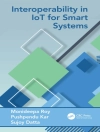The book covers recent trends in the field of devices, wireless communication and networking. It presents the outcomes of the International Conference in Communication, Devices and Networking (ICCDN 2018), which was organized by the Department of Electronics and Communication Engineering, Sikkim Manipal Institute of Technology, Sikkim, India on 2–3 June, 2018. Gathering cutting-edge research papers prepared by researchers, engineers and industry professionals, it will help young and experienced scientists and developers alike to explore new perspectives, and offer them inspirations on addressing real-world problems in the field of electronics, communication, devices and networking.
İçerik tablosu
A Simple VIS-NIR LED based model for estimation of Plant Chlorophyll.- A novel high performance leakage tolerant keeper domino circuit for wide fan-in gates.- Drain Doping Engineering and Its Influence on Device Output Characteristics and Ambipolar Conduction on a Splitted-Drain TFET Model.- Implementation of a Doped-Pocket Region in order to Enhance the Device Performance of MOSFET .- Implementation of home surveillance system using Local Area network and Internet of things.
Yazar hakkında
Rabindranath Bera is a Professor and Head of the Department of Electronics and Communication Engineering (ECE) at SMIT and has been driving the ECE department for 13 years. He is also engaged in R&D activities including sponsored and in-house projects. He completed his B.Tech., M.Tech. and Ph.D. at the Institute of Radio Physics and Electronics, University of Calcutta, Kolkata. His areas of interest are remote sensing (active and passive), communication, 4G mobile communication, integrated sensing and communication, adaptive signal processing and cognitive radio and radar systems, radio astronomy, and process control instrumentation. Dr. Bera won the URSI ‘International Young Scientists Award’ in 2005, and recently attended the IEEE 5G SUMMIT in Kolkata (March 3-4, 2017). He has 3 books, 85 journal papers and 80 conference papers published to his credit.
Subir Kumar Sarkar completed his B.Tech., M.Tech. and Ph.D. (Tech) at the Institute of Radiophysics and Electronics, University of Calcutta and his post-doctoral degree at Virginia Commonwealth University (VCU), USA. He has worked 10 years in the industry, e.g. as an executive engineer for the Oil and Natural Gas Corporation (ONGC), and 25 years at universities (8 years at the BESU and 17 years at the JU) in various capacities. He was the Head of the Department of Electronics and Telecommunication Engineering, Jadavpur University from 2011 to 2013, and has coordinated the IC Design & Fabrication Centre, Jadavpur University from 2016 to present. He has authored 5 Engineering textbooks published by CRC Press USA, Artech House USA, Pan Stanford, USA, and S. Chand & Company Pvt. Ltd., India. He has been engaged in 15 R&D projects sponsored by various Government of India funding agencies (completed/ongoing), and has published more than 600 technical research papers in archived international/national journals and peer-reviewed conference proceedings. Hisresearch areas include nanodevices and low power VLSI circuits, computer networks, digital watermarking and RFID. He is a Senior Member of the IEEE, IEEE EDS Distinguished Lecturer, Life fellow of IEI (India) and IETE, Life member of ISTE and Life member of Indian Association for the Cultivation of Science (IACS). He has successfully organized two IEEE sponsored International Conferences as Convener (2004) and as General Chair (2012).
Om Prakash Singh is an Associate Professor at the Department of Electronics and Communication Engineering, Sikkim Manipal Institute of Technology, and coordinator of the DSP/VLSI laboratory. He received his B.Tech. in Electronics from the SRTMU, Nanded, India and his M.Tech. in Communication and Signal Processing from the IIT Bombay. He has more than ten years of teaching experience in adaptive signal processing, VLSI, advanced communication etc. and is currently pursuing research in e.g. speech processing and image processing.
Hemanta Saikia is an Associate professor in the Department of Electronics and Communication Engineering of Sikkim Manipal Institute of Technology, a constituent college of Sikkim Manipal University. He received his B. E. in Instrumentation Engineering from Jorhat Engineering College under Dibrugarh University, India, M. Tech. in Electronics Design & Technology from Tezpur University, India and Ph D. (Technology) from Gauhati University, India. His research interests are Pattern Recognition, Instrumentation and Digital Systems. Dr. Saikia has been in the field of Education and Research for more than 14 years. He is a member of IEEE, corporate member of the Institution of Engineers (India) and life member of Systems Society of India. He has published 8 research papers in various International Journals of repute.












